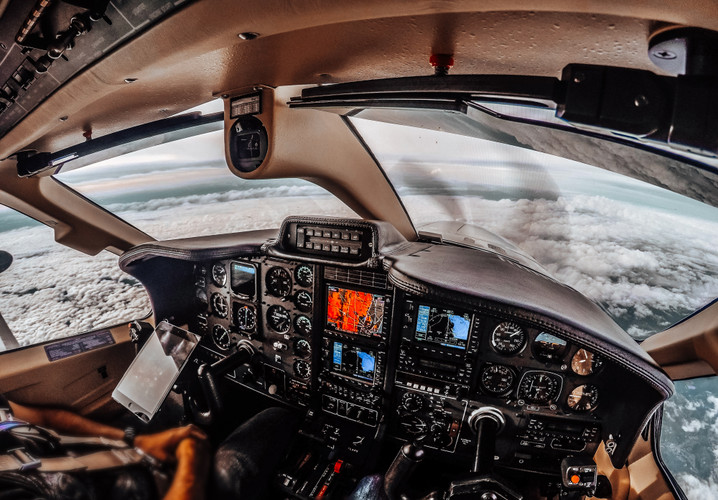Posted by Katie A. on May 6th 2022
Are you thinking about getting an instrument rating? Most pilots will tell you that it can only help you and doesn’t really hurt you. There are many reasons to consider pursuing an instrument rating.
The most obvious reason to pursue an instrument rating is so that you can fly in the clouds. Here in San Diego, we often have a marine layer in the mornings and it often doesn’t thin out at all in the winter. I was just starting my instrument training and my instructor and I were about to shoot an approach at a local airport. We took off out of Montgomery Field and headed towards the coast climbing through the clouds up to about 3,500 feet. What I didn’t realize before this flight was that because the tops of the clouds were only at 3,000 feet, we broke through and were flying in what could be considered VFR. It was perfectly clear above the clouds! That solidified my reason to pursue an instrument rating! Most of the time, it is perfectly clear at the destination, you’ll just need a way to get through the cloud deck. Having an instrument rating means you can make the decision to go, even if under VFR you would not be able to.
An instrument rating is a lot of work to obtain but the experience you will gain from pursing it is invaluable0. You are now flying in the “system” and learning to talk on the radio. This is an important skill, especially for pilots who have done their primary training at fields without a tower. There are different calls to make on an instrument flight plan and ATC is normally talking to a lot of pilots at one time so transmissions speed up. With an instrument rating you can use Tango routes (T-routes) for direct access through busy airspace. You would just have to have the required equipment on board. T-routes are helpful for pilots that want to stay off airways for better separation between VFR and IFR traffic. Sometimes these routes are lower in altitude, so pilots can remain outside of icing conditions. T-routes are becoming more and more popular with instrument rated pilots because they save time and fuel. Everything changes with the addition of GPS. You can fly VOR approaches with a GPS overlay as a secondary safety check. You are now flying specified routes as an instrument rated pilot as opposed to flying wherever you want as a VFR pilot.
Every person whom I’ve talked to (with at least an instrument rating) tells me that as soon as you start your instrument rating you realize what a sloppy pilot you are. An instrument rating requires some finesse and you have to be even more precise than with your private pilot rating. As an instrument rated pilot, you are required to remain within a certain radius along victor airways and during approaches. It is very easy to get distracted because you are no longer looking outside spotting traffic, but inside scanning the instruments. Your altitude will probably fluctuate a lot at first, and you realize how much that directional gyro precessed within the last five minutes. Getting your instrument will make you a better pilot overall.
An instrument rating may also save your life if you unexpectedly fly into IFR conditions as a VFR pilot. Maybe you didn’t check the weather so thoroughly before your cross country and you realize the clouds are lower than predicted. You may be able to notice this early enough to turn around but it is possible that you might not be able to. A “pop-up” clearance could easily be obtained in this case and you can continue the flight. An instrument rating is not easy by any means, but it could one day save your life.

